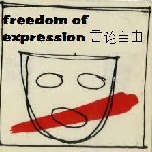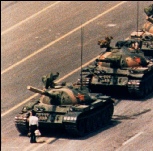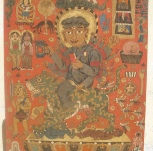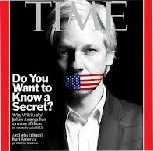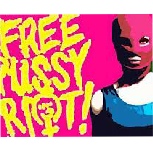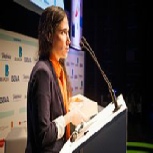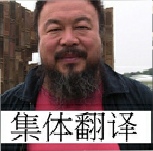
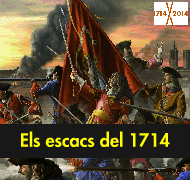

At our time, a discussion on painting must consider the relationships between targets (individual cases), Chinese modern painting at this age not only involve with its own logic, but also external elements (context, power, opinion) and clear message of paintings. Obviously, we are often confused by such problems, to paint symbols that carry exoticism, to paint subjects that discuss realism in society and politics, both trends has been going on for a long time, and still in progress. Under the condition of rapid changes in Chinese society; do those expressions still accommodate today’s social dialogues; will they be able to reflect the modernity of present China; can painters find a new way to surpass context, these are the challenges of Chinese contemporary paintings. Therefore, Hua Qing and Huang Du brought out an interesting conversation towards those complicated issues.
(Huang Du and Hua Qing will be presented as Huang and Hua in the following paragraphs)
Huang : I have known you for a long time, as I remembered; you have taken parts in some avant-garde art activity in the early 80’s, such as plays.
Hua : Yes.
Huang : You went to Yugoslavia in 1987, and came back here in the end of 90’s to start your career in art again in China. Under this condition, you are comparably strange to the public in China. Can you briefly describe your early art education background for us?
Hua : I studied art in the Anhui college of Arts for 3 years at the early age; I continued my study at the Central Academy of Fine Arts and Design from 1982 to 1986. Chinese modern art movement is at its golden age in 1985, I have devoted my energy into those activities, mainly in stage design of important avant-garde theater projects. I didn’t treat those projects as design cases, but chances to accomplish the art which have been restrained by the environment, such as installation art. It was impossible to get people’s approval, neither in political art, nor does avant-garde movement. So, I wanted to procure installation art on stage, transform actors, audiences, and stage into a free space, such as installation art.
Huang : Ok, we can come back to this subject later. Can you summarize your own experience in art first?
Hua : 1986, I stayed at the Old Summer Palace for about 1 year after my graduation in Central Academy of Arts and Design. The idea of artists’ village in Old Summer Palace hasn’t been around yet, I just lived close to it. I went to Yugoslavia in 1987, lived and worked there for about 10 years, and went to Taipei in 1999. I went back to Beijing in 2006, of course, I visited Beijing quite often when I was in Taipei, visited friends and pay close attention to the art movements in China.
Huang : I remember a time about mid- 80’s, so around 85, 86, Chinese modern art was very active. At the time, American modern art master Robert Rauschenberg hosted an exhibition in the Beijing National Art Museum of China. It’s like a shot of cardiac to the Chinese modern art, the impact was huge. Your school also invited Mr. Rauschenberg to give a lecture and gave him an emeritus professor title. So, what kind of impression did Mr. Rauschenberg’s exhibition and lecture left on you?
Hua : From the artist point of view, I didn’t understand the meaning of his art at that time, but was shocked by the momentum of his paintings, as well as the gigantic energy and new concept behind it. Other than that, I also got a lot of information on modern art development from photorealism artist Yao Ching-Jang in New York. New York was the center of art world at the time, so the information was very centered and fresh. I was influenced and enlightened by the information as well.
Huang : I think, at that period of time, Chinese modern art had commotions like puberty; it was under an ambiguous and uncertain state. Let’s look back, the meaning of cultural impulse and radical phenomenon is not the discussion on similarities between different branches, but breaking the rigid concept with modern art in the Chinese society at that time; breaking the realism prison built by doctrines. That was the value.
Hua : Allow me to add something here. I think it was something full of vitality.
Huang : There is a context here, which is the contradiction between avant-garde art and political ideology. It’s about the social condition at that time. Such as plays directed by director Mou Sen, although we still look at Mou Sen’s work as a reproduction of modern theater, because the artless use of laborers and amateur actors, which originated from a Polish director Jerzy Grotowski’s idea of “Poor Theatre”, that minimize everything on the stage except for the actors and director; break the boundary between the performance and the audience. Even though the ideas between Mou Sen and Jerzy Grotowski exists an internal connection, but the significance is more than that, it is the breakthrough of Chinese modern theater values system.
Hua : I think on great levels what you said accordance with all of the art fields at the time.
Huang : Of course, we can’t just discuss art with ontology, but analyze it under a cultural structure. That is, by using its context to understand the connection of cultures and concept of art. Therefore, the artist at the time has more pure ideal, instead of temptation and confusion.
Hua : Right, opposed to nowadays, there were less commercial elements. I remember riding bikes to somewhere when I was living in Old Summer Palace, there were white poplars standing tall on the side of the road, catkins would rain down in the spring, and I felt impetuous. Than, I would go to lectures, I felt excited, felt like I am seeking for the truth, seizing directions towards future. It was indeed a pure and simple time, and a memorable time.
Huang : We often look back at the 80’s nowadays, and you are one of the participants in the 80’s art trend, what did it left in your life?
Hua : I think it was values. Indeed, doesn’t matter what we face now, such as the irresistible temptations in real society, seductions of material world. However, achieving personal values has been seared onto us by that period of time. Of course, we can’t resist all the temptations, but it was the popular trend of thoughts, as well as idealism. I read a book called “People, Years, Life” when I was young, it was talking about the life of artists in Paris, such as Hemingway, Picasso…numerous of artists and poets. It was back then, I fantasize this kind of lifestyle, not obeying the allowance of government, work at their unit everyday. I fantasize the life of a drifted artist. This left a very deep impression on me, like a set values, like a reference, influence our values for life. At the time, things like soul’s origin were popular; it makes you think about if you are still on the right track every time anything happens, what am I doing? Are we making art? What is art? You will think about the center of the problem. My thoughts and actions were as simple and idealistic as that, which is very different than my thoughts now, the idealistic point of view and the responsibility towards history has infiltrated into one’s blood.
Huang : In fact, artists had a very hard time back then, it wasn’t easy to fulfill the basic survival and the environment wasn’t as free and tolerant. Compare with now, the environment today is munificent, back then, everyone lived on the salary from their unit, you can’t live without that money. So, you went to Yugoslavia later?
Hua : Yes, I went to Yugoslavia in 1987. It was a very special experience for me, I went to Vienna first, and moved to Yugoslavia a little later. Yugoslavia was under a lot of changes at the time, and I experienced different cultures, made art, and also involved in some experimental art, but I couldn’t fully accomplish my dreams in art making.
Huang : So, you have witness the difference between “Cold War” and its end.
Hua : Yes, I have experienced the end of “Cold War” and society changes of Eastern Europe socialistic countries. Indeed, that was a time of great changes, and it was very exciting.
Huang : After the fall of Berlin wall, the union started to declare their independency, such as Slovenia which is the first one to declare their independency.
Hua : Right, I can tell you something interesting, I didn’t know what was inflation, the school never taught us what is inflation. I first experienced inflation in Yugoslavia, when you exchange a piece of bread with a bucket of money.
Huang : Isn’t that like the inflation before the liberation when Kumintang (KMT) used to rule the country?
Hua : Yes, Yugoslavian economy was at its edge of collapse, the face value of money were increasing, in half year, even a month, another zero was added on the currency! One hundred can become ten thousand; ten thousand can become a million. I can even give You an example, like you go to a restaurant with one price, and it will be different after you finish the meal.
Huang : Wow, that fast!
Hua : Yes, the bill of a million was around at the time, but you still need the small bills, so you have to collect a bucket of money to purchase bread.
Huang : When was this?
Hua : Around 1989-1990
Huang : What kind of art were you doing at the time? What type of connection does it have with the local culture?
Hua : I was involved with local art activities, including art center of young people, called "Young Students’ Art Center". I like this organization very much, they exhibit new works very often, I have also hosted exhibitions there. Chinese modern art wasn’t as important as it is now. I also organized Chinese art exhibition, I think it was still meaningful. I would like to tell you a true story, I had hosted an exhibition next to the Croatia’s seaside; it is a beautiful seaside, and on the opening day, both Croatia and Slovenia has declared their independency, and there started the civic war, so I couldn’t go back to the capital of Slovenia. The tanks, troops came in, what was interesting is that it was an exhibition under gun fire, I had a deep impression.
Huang : Your life experience is vivid and moving, from the social changes caused by the end of Cold War, to the conflicts between different races. What did these unusual events impact on your art?
Hua : For me, life experience will appear in the work obscurely. From my early works to the recent works, I still pay attention to the bigger subjects, such as philosophical questions: What are human? Where are we going? Is human culture worth challenge? And if human has been improving? Because of my experience, it is hard for me to go for popular commercial symbols, or pretty images. If I think about my own experience, or my origin of soul, it is difficult to do things that are easy and sweet.
Huang : So, you are actually still thinking about philosophical issues, like Gauguin, Where are we from? Where are we going?
Hua : Of course Gauguin’s (1848-1903, Paris, France) experience is more devoted than us.
Huang : You were involved in a lot of activities in Yugoslavia.
Hua : Yes.
Huang : It was a distinctive age, because of the end of “Cold War”, Yugoslavian union had fallen apart, Yugoslavia is comparably marginal to the western politic and culture. Eastern European countries were neglected until recent years, the art and culture in the Balkan area has been raising attention to the western art world nowadays, such as famous German curator R.Block and Swiss curator Harald Szeemann’s exhibitions about the modern Balkan art. Before that, British curator David Elliott (who was the curator of Museum of Modern Art, Oxford and Mori Art Museum, Tokyo) had hosted an exhibition called "Post-Socialism". From a grand scale, the attention on the Eastern European art is too slow, and too few. In the early 90’s, the world is still centered in the western world, and Yugoslavia was marginalized. However, I think today’s art is in a moving condition, there are no steady territories, instead, it’s always changing, it is based on the growth of globalization and develop of information technology. Now, China’s economical development provokes the Asia-pacific economy, as? well as confidence in Asian culture. The leading countries are China and India. What we are talking about is that culture is not fixed but nomadic. After you left Slovenia, you went to Taipei, and then came back to Beijing, and your art is not about making symbols or chasing after exoticism.
Hua : Let me add something, I am not against symbol making.
Huang : I realized you have chosen metaphorical ways of paintings; you are not trying to depict the natural features of a gorilla, but reflect human thoughts from the image of gorilla. Through the subjective depiction of a species, reflect the attitude of human. So, why did you choose gorilla as your subject matter?
Hua : Just like the species you said, the gorilla I painted is personalized, and I was able to express my feelings through painting the forms. But what I am interested is the idea of “in between”, gorilla is similar to human beings, but he is not human; or zebra, is not a usual horse; as well as ostrich, which is a bird that can’t fly. Naturally I would paint some rational things about human, to present the existence of animality in human; I would add some mathematical symbols or philosophical phrases and anatomical images in the background, to express the relationship between natural state of animals and rationality of human beings.
Huang : What does E=MC2 in your painting mean?
Hua : It’s the Theory of Relativity by Albert Einstein.
Huang : You put the Theory of Relativity by Albert Einstein with gorilla, what kind of relationship do they have?
Hua : It is both rational and emotional. E=MC2? is an objective truth, and the image represents an uncertain and emotional feeling, it questions if human has rationality. It suggests the contrasts between human rationality and animality. But I agree with what you said about nomadic cultures, if we go back to the 80’s thinking of globalization and ethnocentric, under this subject, should the Chinese culture liberate more, going back to the ancient idea of one “Tian Xia” (world), in fact, nomadic is an anti-territorial organic space for art.
Huang : It’s the concept of? "cosmopolitism".
Hua : For example, if an Italian artist came to China for art creating, we can take his creation as Chinese art. Even if he lived in China for a long time, but thinks of himself as an Italian and does not appreciate Chinese culture, we can still take him as part of Chinese culture, doesn’t matter how much he challenges Chinese culture, because a culture needs its paradox, it will bring us a more open minded environment. For example, there used to be a popular phrase in Taiwan called “Life Community”. Of course we can discuss if the idea is successful, but if we borrow the idea of the phrase, go back to 798 Art District in Beijing, isn’t it a life community or art community as well. Doesn’t matter where you are from, what color of skin you are, what kind of cultural background you share, whether you are against our culture, as long as you create your art work here, you are part of us. And everything generated from this community is Chinese culture.
Huang : When I was talking about “nomadic” ideas, I meant when artists avoid symbolic limitation, independent from any existed concepts, breakthrough the boundaries. Fight the entirety with differentiality.
Hua : Like an origin or source, the art produced on this land, doesn’t matter where you are from, with what background, we can call it our art.
Huang : Under an open social background, we need a free environment and tolerance. The modernization progress of China is very similar to the post-war Italy; it was called the “Italian miracle”, which is the time when Italy’s economy went through a rapid development. Roma became the capital of the culture in the world, such as American artists Cy Twombly, Robert Rauschenberg, author of “The Best Generation” Allen Ginsberg all gathered in Roma, it’s like Beijing nowadays, a lot of artists and intellectual gathered in Beijing, a city full of luxury and energy, the culture is free and tolerant. If you think about it, we can realize the two cities have obvious differences in social condition. If Roma’s development is based on Italian economy, and Italy’s raise is based on the Marshall plan of the United States, and pushed Italy with economical help, and as well as the front line of the “Cold War”; then Beijing’s development is also based on China’s economical growth, however, the social condition is different, China is in a globalizing age, and its social and cultural problem is under a lot of changes.
Hua : When people from different culture gathered in one place, would the local artists and philosophers develop the following situation: one is to insist on local culture, such as obvious symbols of China or communists’ symbols in Chinese modern painting. Another one is on a more grand scale, more international issues, going back to the subject of all human kind, such as environment, peace, and animal protection.
Huang : That is the environment of our issue has changed, we can say that during the “Cold War”, there wasn’t globalization and information revolution. The dialogue of art was still centered on western ideas, but it has changed since then, it is a diversified age, it is a both globalizing and localizing age. We can tell the issues have gotten more complex, such as environmental issues, global warming, terrorism, poverty gap. In the past, we only see the problem partially, but now, our understanding has improved. Now Let’s go back to your painting; your painting doesn’t limit itself in the Chinese dialogue, but concentrating on the question of human beings between globalization and localization. It has clearly surpassed the limitation on locality in art.
Hua : I was trying! An artist’s choice of creative direction is based on his life experiences, background, and values, so I would choose the issue that matters to all human beings.
Huang : When did you start to paint gorilla?
Hua : 2005
Huang : Why did you use red? Does it imply anything?
Hua : First of all, it has a stronger visual impact, and I like the color. Whether it implies anything else, I think it is for the audience to find out. I actually think that some of the art doesn’t appear right at the moment, it needs some time to digest and achieve its meaning.
Huang : Moreover, why do you categorize your paintings into three different types: first, “Lord!”; second, “The Thinker”; and third, “The Upanishad of Human Beings”. What’s the relationship between these classifications and your ideas in painting?
Hua : We can say that it’s the transformation in artistic style, and categorize them later on, but they are not particularly clear. You can still tell the subject matter is about human. Like “Lord!” has something to do with religion; “The Thinker” is about the meditation of an individual; and “The Upanishad of the Human Beings” is expressing the question of origin.
Huang : I realized you incorporated the French philosopher Rene Descartes’ “cogito, ergo sum (I think, therefore I am.)” idea (Rene Descartes, 1596-1650), which is realizing one’s existence through thinking, another word, the process of knowing one exist, is the proof of his own existence.
Hua : I am very interested in Descartes’ philosophy, because doesn’t matter a person is in the reality or in his dreams, he can’t not deny his feelings and thoughts. As long as he has both, than he must be real, because only a living flesh has the ability to perceive. We can say that Descartes had pushed his doubts to the limit: “I will suppose, then, not that there is a supremely good god who is the source of all truth, but that there is an evil demon, supremely powerful and cunning, who works as hard as he can to deceive me. I will say that sky, air, earth, color, shape, sound, and other external things are just dreamed illusions which the demon uses to ensnare my judgment. I will regard myself as not having hands, eyes, flesh, blood, and senses, but as having the false belief that I have all these things.” Therefore, Descartes’ doubts are not towards some specific matters or theories, but towards human, worlds, and god. From these doubts he was able to lead out his philosophical subject. Based on this philosophy, I wrote down “cogito ergo sum” on a lot of paintings from the series of "The Thinker". As I understand it, “cogito ergo sum” is, through thinking one can realize his own existence, as well as understanding the world. This is one of the characteristics that human beings distinguish ourselves from other animals, the reason why human are high beings is that we can think, and thinking is a process of evolution. Through this process, our knowledge and understanding is achieving a higher, deeper, further, more perfect state. And for that, our animality has been decreasing with the process, but on some level, our distance with other animal and the environment has gotten further away. Of course, the psychological distance provide us securities, however, it became easier and easier for us to ignore other animal and the environment, and the fact that we need each other for survival. Not only that, we also lost the sensitivity which we had when we used to be a part of the nature, and the feeling that we are part of the nature itself. Of course, despite all the suspects, I still think human beings are improving. But what will human beings turn into be in the future, is a fantasy with lots of possibilities. In my paintings, there are a lot of gorillas meditating, one of my imaginations is, those are the future human beings, they have our ways of thinking, and they have powers and vitality that surpass us. And they are thinking, they are thinkers. In the painting, they look like they are recollecting their origin before their evolution, which is us; recollecting the wisdom, thoughts, technology, and civilization at our time. Because of our effort, they are able to achieve their evolution. We can’t just have one imagination for the future; machines flying high in the sky, high rise buildings, and robots. Why not furry people with pretty skins, running naked on the field.
Huang : In fact, art can’t become an explanation. It often presents multi messages, that is, a single work or painting will express not only one clear idea, but a lot of ambiguous ideas. Therefore, the charm of art is in its different interpretations.
Hua : Yes, everyone has different backgrounds and knowledge, it is impossible to have just one opinion when they look at the painting.
Huang : When we talk about Chinese contemporary art, it is common for us to put it in context to understand the work. But your work is very difficult to do so, it is because your painting has already surpassed context, this types of art gave us great inspirations.
Hua : It is about the value, spiritual world, and the origin of soul of an artist, it is about choices the artist made. Jumping out of the context and concentrate on a bigger scale is a more ideal situation for me. I will be very happy if you look at my work this way.
Huang : Is there anyone who felt that your work doesn’t have any features relates to China? Has anyone asked you about that?
Hua : As I have said earlier, I am a Han (Chinese), despite the nationality concept. And I create works in 798 Art District, of course my works are Chinese art. Even if it’s someone from the west, as long as he works and creates in 798 Art District, it should be categorized as Chinese art, more so if he lives here for ten years, this is the ideal situation.
Huang : Your stroke is very powerful, there are some expressionist influences, but not as simple as that, how do you control your artistic style?
Hua : First, I think concept comes before expression. That is, what we are trying to present, what we are trying to convey to the audience, how to develop the concept in our head is more important than others. Expression means the medium we use; the limitation has to be broken in different medium. You can use anything to achieve what you are trying to say. We have to throw away all the definition in art, that is generalized art categories, such as movies, theater, music, anything that harmonizes in one concept, is for us to use. Paintings is of course, one of the choices I made, it is a craft of hands, handmade craft will become very important in the future, because it has the classic spirit and values. Paintings are unrepeatable, because of its precariousness. For example, you wanted to use green, but accidentally it came out gray, and you think it works better this way, so you follow the senses and the image, and develop uniqueness and style. This is the pictorial essence, and contemporary art can think about this, where does painting stand in the contemporary art? Moreover, as far as I know, the education of some countries is different to Chinese, they don’t have the concept of fundamental trainings, but we went through this kind of trainings. I don’t think its right for people to throw away the fundamental trainings because you are dealing with contemporary or modern art; I still want my work to present the art education I went through.
Huang : So, how would you explain pictorial essence?
Hua : My personal understanding is the visual aesthetics. Of course, the essence will make the work unique. It will bring the work close to the artist; reflect the artist’s personalities and even the mood of the artist, it also brought the audience closer to the artist with direct relationships. It pushes the artist to accomplish the newness in his own style, to express his individuality and differentiality in artistic style, such as color, contrast, stroke, thickness of paint, stroke can show the artist’s style. A painting has its own development logic, which alters along with the painting process, develop into different directions, an artist will feel his own life and personality in his paintings.
Huang : Painting is a very traditional and complete form of art, it is hard to push forward even a little bit. And the newness is developed based on the history of painting. I think it is a very complex issue.
Hua : I haven’t had a complete answer to this question yet, but what we can explore today is already a lot.
Huang : Let’s talk about a practical question, in the Chinese art system, academic education is very strict. After the graduation, students don’t follow what the academy has taught them. The values of academy and the modern art contradict with each other. Modern art is about freedom, personality, and break through, where academic art has a strict technique and conceptual system, as well as limitation and rules. Obviously, your painting didn’t go back to the academic system.
Hua : This is a question of two sides. I think the academic education is providing you with different blocks for you to build what you want, not necessarily in an opposite direction. I haven’t been paying attention to the educational issues, because I only think about my direction towards paintings, how to integrate the perception into my paintings. I think, every painting of mine is asking about life and its purpose, and subsume uncertainty. I have a grand concept that I want to express, and I use my experiences, feelings, judgments, and techniques to express that concept, work hard to achieve the goal and the effects.
Huang : In the Chinese contemporary art world, how would you describe your position?
Hua :Just like what I said earlier, there are two kinds of artist: one of them is willing to emphasize on the locality; others tend to care about bigger issues. And I would like to think of myself as the later one. Visual art is not just pretty pictures, but it should reflect philosophical subject matters, and not just something in trend.
Huang : Do you think your paintings talk about major issues or intimate sentiments?
Hua : I think it talks about both; I try to bring both into my paintings. For example, I have a painting that’s 10 meters long 3 meters high, the title is “Illustration for A Living Being: Love, Disaster, Salvation, Sublimation” it is a grand subject matter that I try to present. And in the series of “The Thinker”, I try to express the feelings with pictorial elements; to reflect my own emotions; to reveal sentiments. Art is like this, on one hand, you care about big issues, and on the other hand, you discover the feelings inside your heart. A person is a unity, which can touch the humanity and evoke sympathy in people’s heart.
Huang : This is a meaningful conversation we had, thank you!
Hua : Thank you!
January 26, 2008

